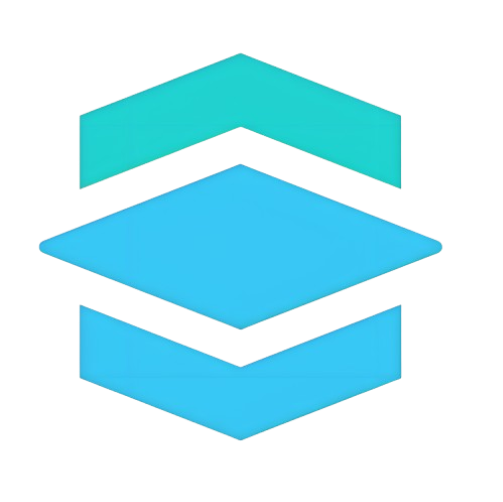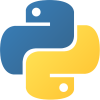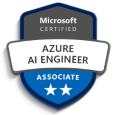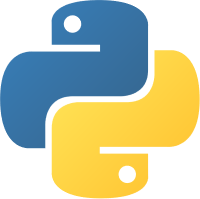31
OctHow to Become a Python Full Stack Developer [Step-by-Step]
Python Full Stack Developer Roadmap
A Python Full Stack Developer is someone who can handle both the front-end and back-end development of web applications. They use Python for the server side and technologies like HTML, CSS, and JavaScript for the client side, making them versatile and in high demand. Understanding the roadmap to becoming one can guide you toward mastering the necessary skills.
In this Python tutorial, I will walk you through the Python Full Stack Developer roadmap, covering the tools, frameworks, and technologies you need to learn. Python developer earn 50% more than average coders. Enroll in our Free Python Developer Course now and unlock ₹20 LPA jobs!
Embark on the Journey of Becoming a Full-Stack Python Developer
1. Get Hands-On with IDEs and Code Editors
If you're starting with Python programming, you need to get familiar with IDEs (Integrated Development Environments) and Code Editors. These tools make coding easier and more efficient by providing features like syntax highlighting, debugging, and auto-completion. Some popular options include:
- PyCharm - Ideal for professional Python developers, offering advanced features and a clean interface.
- Visual Studio Code - A versatile and lightweight editor loved by developers for its customizability and vast extensions.
- Atom - Known for its user-friendly design and open-source nature.
- Microsoft Studio Code - Another reliable option to start coding efficiently.
To get started, install one of these IDEs on your computer system and begin exploring. Each tool has unique strengths, so choose the one that suits your style. Dive into writing your first lines of Python code and experience how these editors simplify the development process!
2. Clear Your Python Fundamentals
Before diving deeper into Python, you should first ensure that you have a strong understanding of its fundamentals. To start, visit the official Python website and download the latest version of the language. Once you’ve completed the installation, you can begin writing and running your Python code directly in your chosen IDE.
It’s essential to build a solid foundation, and this begins with gaining conceptual clarity on the core Python concepts. Focus on the following key topics:
- Variables in Python and String Manipulation - Understand how to work with data and text effectively.
- Conditional Statements in Python - Master decision-making processes like if-else and nested if-else statements.
- Loops in Python - Learn about while and for loops for efficient iteration.
- Functions in Python and Modules & Imports - Understand how to create reusable blocks of code and use built-in functionality.
- Explore data structures such as Lists in Python and Dictionaries in Python - Learn how to store and manage data efficiently.
- Exception Handling in Python - Master how to deal with errors and exceptions effectively in your code.
- Object-Oriented Programming Concepts in Python - Gain proficiency in core OOP principles like inheritance, polymorphism, and encapsulation.
By focusing on these foundational topics, you’ll be well on your way to becoming a proficient Python developer. It's important to practice regularly, write small programs, and gradually increase the complexity as you gain confidence.
3. Learn the Basic Python Libraries
As you progress in Python, you’ll need to familiarize yourself with several libraries that will significantly enhance your ability to work with data, perform scientific computations, and develop machine learning models. Here are some essential Python libraries to get started:
- NumPy: This powerful library is essential for performing mathematical operations on large arrays, multidimensional arrays, and matrices. It’s the foundation for many scientific computing tasks.
- Pandas: Widely used for data manipulation and analysis, Pandas provide high-level data structures for efficiently working with tabular data, like tables or spreadsheets.
- SciPy: A free and open-source library built for scientific and technical computing. SciPy builds on NumPy and offers additional functionality for optimization, integration, interpolation, and more.
- Scikit-Learn: This popular machine-learning library in Python is designed to work seamlessly with numerical libraries like NumPy and SciPy. It’s a go-to for tasks like classification, regression, and clustering.
- Matplotlib: One of the most commonly used libraries for data visualization in Python. Matplotlib enables you to create bar charts, line plots, histograms, and a variety of other graphs to represent data visually.
- Seaborn: Built on top of Matplotlib, Seaborn enhances visualization capabilities. It supports a wide range of visualizations like heatmaps, scatterplots, and line plots and offers additional features like color palettes and statistical analysis tools.
Mastering these libraries will help you become a well-rounded Python developer capable of tackling a variety of tasks, from data analysis to machine learning and data visualization. They are integral to working with large datasets and performing complex computations, making them essential in any Python developer's toolkit.
| Read More: Machine Learning Roadmap |
4. Front-end development with Python
Front-end development, also known as client-side development, focuses on building the User Interface (UI) of a website or web application. It is responsible for determining how every element of the website, such as buttons, forms, media, and animations, will appear and function. Essentially, it's everything you see and interact with on a website when you visit it.
There are three fundamental front-end technologies every developer should master. These are:
- HTML: The foundational building block of web pages. HTML allows you to create the "skeleton" or structure of a website. It’s used to build the basic elements that make up a web page.
- CSS: Cascading Style Sheets (CSS) enables you to apply styles to your web pages, such as colors, fonts, layouts, and animations. CSS is essential for creating responsive websites that adjust according to a user's device resolution and orientation.
- JavaScript: JavaScript adds interactivity and dynamic functionality to websites. It allows developers to design interactive UI components and control the behavior of a webpage. As a lightweight, open-source, and cross-platform language, JavaScript is widely used to create engaging websites.
In addition to these core technologies, it's essential to learn some frameworks and libraries that can significantly improve your development process:
- jQuery: A front-end JavaScript library that simplifies client-side scripting of HTML.
- Angular: A component-based framework for building scalable web applications. It includes a collection of integrated tools and modules to streamline development.
- AJAX: A technology that enables faster and more interactive web applications by asynchronously updating parts of the web page without reloading the whole page. It combines HTML, CSS, JavaScript, and XML for seamless interaction.
To take your front-end development skills to the next level, explore ScholarHat's specialized courses and programs.
5. Back-end development with Python
The back end is responsible for storing and organizing data while ensuring everything on the client side functions smoothly. It’s the behind-the-scenes part of a website that users don’t directly interact with, but it plays a crucial role in making everything work efficiently.
Python offers two popular frameworks that are widely used for back-end development:
1. Django
Django is a high-level Python web framework that makes building web applications fast and efficient. It follows the Model-View-Controller (MVC) architectural pattern, helping developers create structured and sophisticated web applications. With Django, you get a built-in admin interface and a powerful object-relational mapper, which makes developing scalable and maintainable applications easier. It’s an ideal framework for projects that need to be up and running quickly while being easy to manage and expand.
2. Flask
Flask is a micro web framework used for building simpler websites. It’s a lighter, more flexible alternative to Django, making it easier to learn and implement. Flask allows developers to add features such as authentication and database integration using various extensions. Its flexibility is one of its strengths, giving developers the freedom to build applications in multiple ways without being restricted by predefined structures.
| Read More: Best Backend Frameworks |
6. Study the Database Management Systems
Database Management Systems (DBMS) are an essential part of full-stack development. As a Python full-stack developer, you need to understand how to design, build, and manage databases efficiently. It's crucial to be proficient in writing accurate queries to insert, update, and retrieve data from the database.
Python works seamlessly with several popular database management systems, including:
- Python MySQL: MySQL is one of the most widely used relational databases, and Python integrates with it through the Python MySQL Connector. This connector enables you to interact with MySQL databases by executing queries directly from your Python code.
- Python SQLite: The SQLite3 module in Python allows seamless integration with the SQLite database, a lightweight, serverless, self-contained SQL database engine.
- Python JSON: JSON (JavaScript Object Notation) is a data format commonly used for storing and transferring data. Python has a built-in JSON module that allows you to work with JSON data, making it easy to transfer data between servers and browsers or work with JSON-based databases.
In addition to understanding databases, it’s also crucial to have a strong grasp of Data Structures and Algorithms, as these concepts help you optimize database queries and improve performance.
To enhance your skills further, check out these Database and DSA courses:
7. Get a Grip on Python Web Frameworks
Frameworks are collections of core software modules that provide pre-written code to help you solve common programming tasks. By using frameworks, you can avoid reinventing the wheel and focus on building the unique features of your project. They significantly reduce the amount of code you need to write, making the development process much faster and more efficient. Understanding these frameworks is essential for speeding up development and building scalable, efficient applications.
Some popular Python web frameworks include AIOHTTP, CherryPy, Dash, Django, Falcon, and Anvil. These frameworks help you develop web applications more effectively by offering powerful tools and features that enhance the quality of your code and the user experience.
8. Version Control System
A version control system (VCS) is crucial for both backend and frontend developers. It helps you track and manage changes made to your codebase over time. With a VCS, you can see who made changes, what changes were made, and when they were made. This is essential for collaboration, preventing errors, and ensuring you can roll back changes if something goes wrong. By using version control, you can boost the efficiency of your development process and avoid costly mistakes.
Here are the most common version control platforms:
- Git
- GitHub
- GitLab
- BitBucket
9. Testing
Ensuring the reliability and functionality of your web application is essential. Testing verifies that your application behaves as expected and meets the necessary specifications. Without testing, it's hard to guarantee that your application will function properly for all users.
Here are the different types of testing used by developers:
- Integration Testing: Ensures that different modules of the application work well together.
- Unit Testing: Tests individual components to verify that each part works as expected.
- Functional Testing: Focuses on testing the application's features against the requirements.
- End-to-End Testing: Ensures that the entire application functions as expected from start to finish.
10. Develop a Good Network
Building a strong professional network is crucial for your career growth. It can help you discover job opportunities and open doors to new collaborations. Networking means connecting with professionals in your field, including colleagues, mentors, recruiters, and alumni. Both in-person and online networking, such as through platforms like LinkedIn, can make a huge difference in your career.
11. Get Certifications
Earning a certification can significantly increase your chances of getting hired or promoted. It helps you stand out from the competition and demonstrates your commitment and expertise in a specific field. Whether you're aiming to become a full-stack developer or specialize in another area, certifications are a powerful way to boost your credibility and career prospects.
ScholarHat offers a variety of certification courses designed to help you achieve your goal of becoming a full-stack developer. These courses equip you with the necessary skills and knowledge to excel in the tech industry.
| Read More: Full Stack Developer Salary |
Summary
This article provides a detailed guide for aspiring Python Full Stack Developers, covering essential skills in both frontend and backend development. It focuses on the use of Python in building dynamic web applications, databases, and modern frameworks to help you excel in full-stack development. Whether you're just starting or looking to advance, this guide equips you with the knowledge to build powerful applications from scratch.
90% of tech giants prefer full-stack talent. Enroll in our Full-Stack Python Course or risk missing out!
Test Your Knowledge of Python Full Stack Developer!
Q 1: What is the primary purpose of a Python Full Stack Developer?
- (a) Develop only the front end of a web application
- (b) Develop only the back-end of a web application
- (c) Handle both the front-end and back-end of a web application
- (d) Manage databases for a web application
Q 2: Which Python framework is most commonly used for developing the back-end of a web application?
- (a) Flask
- (b) Django
- (c) Pyramid
- (d) Kivy
Q 3: Which of the following front-end technologies should a Python Full Stack Developer be familiar with?
- (a) HTML, CSS, and JavaScript
- (b) React and Angular
- (c) Vue.js and SASS
- (d) All of the above
Q 4: What database technologies should a Python Full Stack Developer be familiar with?
- (a) MySQL and PostgreSQL
- (b) MongoDB and SQLite
- (c) Firebase
- (d) All of the above
Q 5: What is the role of REST APIs in full-stack development?
- (a) To manage the styling of a web page
- (b) To enable communication between front-end and back-end
- (c) To provide a database interface
- (d) To handle authentication in an app
FAQs
Take our Python skill challenge to evaluate yourself!

In less than 5 minutes, with our skill challenge, you can identify your knowledge gaps and strengths in a given skill.

![How to Become a Python Full Stack Developer [Step-by-Step]](https://dotnettrickscloud.blob.core.windows.net/article/4720250122173115.png)




